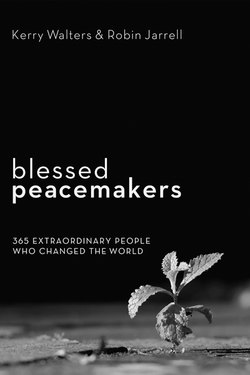Читать книгу Blessed Peacemakers - Robin Jarrell - Страница 83
На сайте Литреса книга снята с продажи.
20 March John Middleton Murry
Оглавление6 August 1889—12 March 1957
Adelphi Center Founder
Not all advocates of peace lead peaceful personal lives. Despite their admirable public work for nonviolence, they never quite seem to achieve a harmony or equilibrium in their private affairs. Such a one was the author John Middleton Murry.
Although largely forgotten today, Murry was one of the most prolific British authors of his generation, writing nearly sixty well-received books and hundreds of essays. He was married four times—one of his wives was the writer Katherine Mansfield; had numerous love affairs (the primary reason his marriages didn’t last); and went through any number of ideological phases. At one time or another, he embraced Christianity (he even thought for a while of becoming an Anglican priest), Marxism, pacifism, and anti-Soviet militarism. But despite his unsettled private life and his leapfrogging from one cause to the next, he was a leading British pacifist in the 1930s. His most significant achievement was the founding of the Adelphi Center, intended, as he wrote, to be “a meeting place for pacifists of all ages who believe there is a need for co-ordinated effort to realize pacifism as a way of life.”
Founded in 1934, Adelphi was envisioned as a nonsectarian experiment in communal living in which participants would practice nonviolence, pool resources, and together create an alternative to the going capitalism model. In his 1937 The Necessity of Pacifism, Murry argued that capitalism is “a social morality, an all-pervading spiritual atmosphere—nothing less, indeed, than a total life-mode,” and that therefore reformist tinkering with it would do little to bring about fundamental change. What was needed, he believed, was the living example of a distinctly different “life-mode,” and his hope was that the Adelphi Center would be just that.
The Center consisted of a large house situated on seventy acres of farmland. Murry’s intention was that the community would become self-sufficient, growing most of its own food and selling or bartering the rest. He hoped for a core membership of twelve pacifists—despite his claim of nonsectarianism, Murry’s Christianity was apparent in his plans for Adelphi—composed of both middle-class and blue-collar workers. The commune hosted a summer school in which some of the day’s leading thinkers lectured. They included George Orwell, Reinhold Niebuhr, and Herbert Read. In addition, it served as a haven for conscientious objectors to military service.
Despite Murry’s communitarian vision, the core members of Adelphi were rugged individualists who found it difficult to cooperate with one another. The experiment collapsed in 1937, and the house was used shortly afterwards to shelter fifty refugee Basque children whom the Spanish Civil War had displaced. As sometimes happens, the reality fell short of the ideal when it came to Adelphi. But Murry’s dream of a community in which practitioners of nonviolence could serve as examples to the rest of the world was and remains noble, despite its failure and Murry’s own personal shortcomings.
